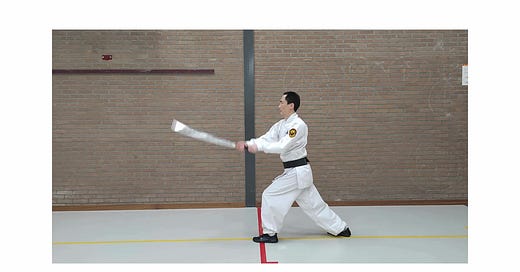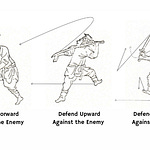Mastering the Fundamentals
Ssangsudo represents one of the world's most ancient martial arts forms. Although Dr. Choi’s practicum section of his recent Ssangsudo publication entails comprehensive explanations and drawings, we can’t stress enough to invest some time and effort into mastering the basics. This guide will walk you through selecting the right equipment, understanding proper handling, and learning fundamental strikes.
Selecting Your Practice Sword
Key Specifications
Length: 80-100 cm, selected to your body dimensions
Material: wood or bamboo (recommended for beginners)
Weight: light enough for precise movements
Grip: comfortable for single-handed control
Critical Sizing Tip
When sizing the sword, your neck, arm and shoulders should remain relaxed. The sword tip must clear the ground by at least 10 cm. This ensures proper technique and movement range.
What to Avoid
Long katana-style swords
Overly heavy equipment
Grips that don't allow comfortable single-hand manipulation
The Art of Sword Handling
Holding a sword is more than just gripping an object - it's a nuanced skill:
Position hand near the sword guard
Use sensitive fingertips, not a death grip
Allow supporting hand to help adjust angle
Maintain a living, responsive connection with the sword
Foundational Movement Principles
Success in sword practice depends on mastering these core concepts:
Legwork is everything
Integrate proper stances
Maintain consistent balance
Focus on precise body mechanics
Three Essential Strike Techniques
1. Head Strike
Vertical alignment critical
Controlled, deliberate power
Keep sword tip "alive" and responsive
2. Right Wing Strike
Diagonal downward motion
Angle from opponent's left shoulder to right wrist
Maintain sword tip's energy and position
3. Left Wing Strike
Mirror image of right wing strike
Angle from opponent's right shoulder to left wrist
Preserve sword tip's positioning
Safety and Practice Guidelines
Begin slowly, prioritizing form over speed
Practice equally on both sides
Use a mirror for technique correction
Incorporate kihap (focused breath) when powering strikes
Practice Preparation Checklist
Observe warm-up and cooldown routines
Use wooden/bamboo practice sword
Wear comfortable, unrestricted clothing
Choose an open practice space
Stay hydrated
Listen to your body's signals
In our next tutorial, we'll expand on these basic strikes, introducing more advanced techniques to enhance your sword practice.
Feel free to ask questions or give feedback below, we would love to hear from you.
And remember to practice regularly; briefly every day will make you progress faster than a long time once in a week.















Share this post